January, 2019
now browsing by month
Balancing the Teacher and Artist in Me, By Jackie Thomas
Balancing the Teacher and Artist in Me

As a Fibers Artist, time has always been a challenge for me. Just plain living takes so much time, and when a teaching career is added, there is little left for the creative process and studio work. I thought I was not really productive in the studio while I was going through challenges of balancing home and school. But in retrospect, I realize I really was productive by channeling my creative energies in a number of ways:
As a brand new teacher, fresh out of college, and having already decided to specialize in Fibers. I packed up a project bag with a pre-woven rya rug backing (on which I drew a simple design), some yarns, a measuring tool, and a large tapestry needle. I kept the bag at school, available for the snippets of time available to work on the rya rug during faculty meetings and in the faculty room (I was told that teachers thought I was stuck up if I never left my classroom, so I scheduled a couple of periods a week to talk with teachers in the faculty room and did my planning at 5:30 in the morning and at home). It was a bulky bag that I lugged around, but I learned about trying to fit into the building and being a member of the larger school community. I believe it took all year to finish that Rya Rug.
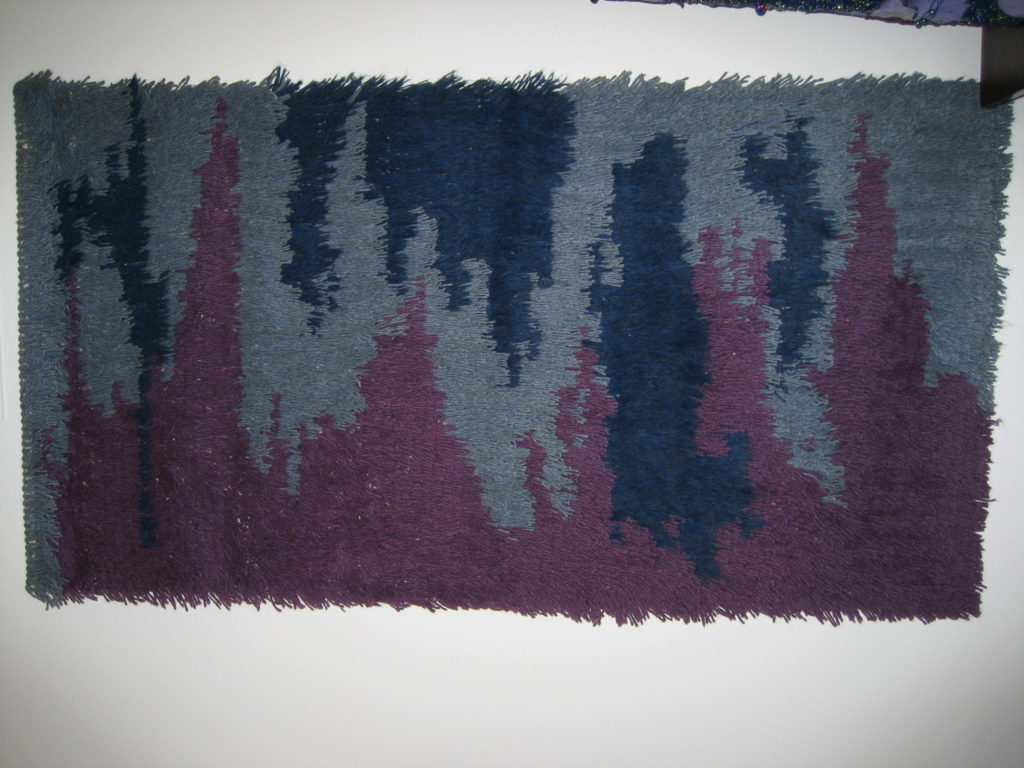
Time to balance teaching and art making didn’t shift any over the years, and I decided that I wanted to complete more than just one artifact in a school year. I looked for projects that would not require much of an investment in time. I tried jewelry making for a couple of years. A new bag of materials accompanied me to meetings and on car trips when someone else was driving.
Feltmaking jewelry:
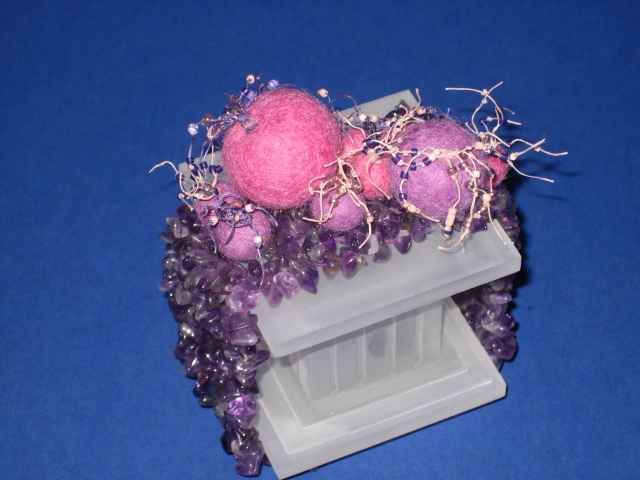
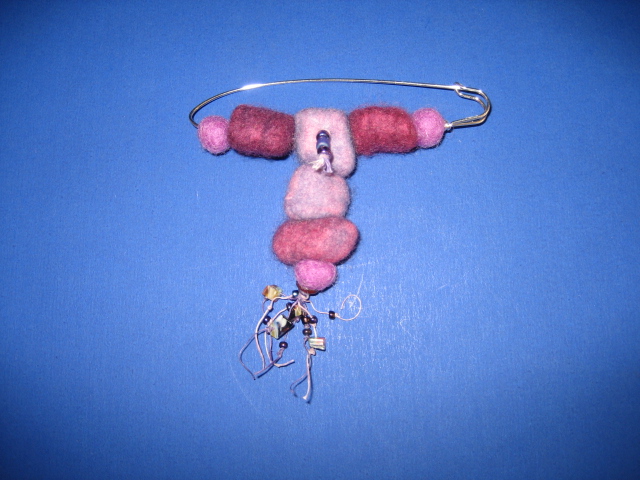
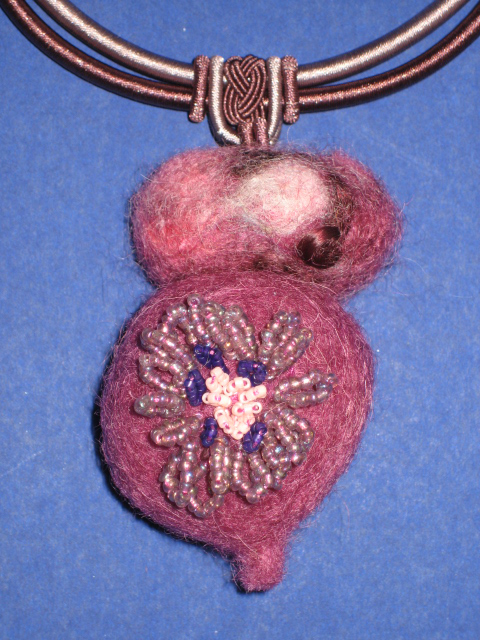
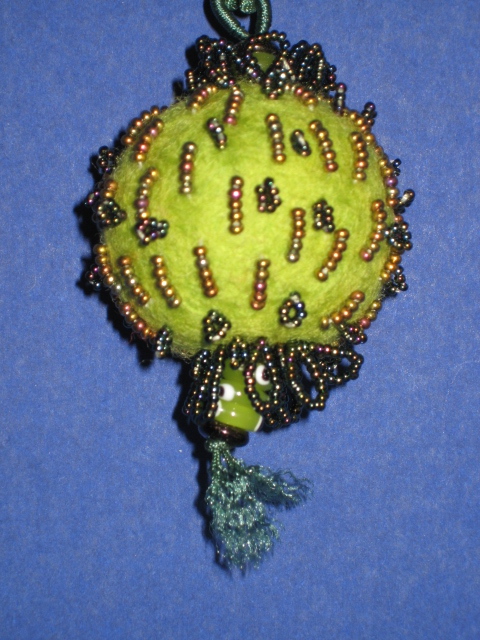
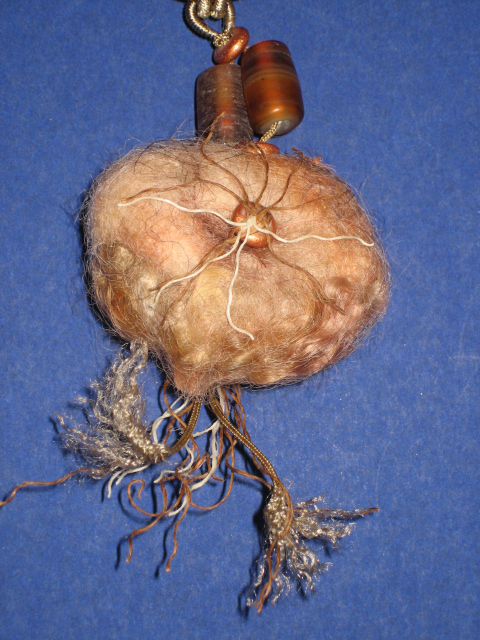
Waxed linen coiling/twining jewelry:
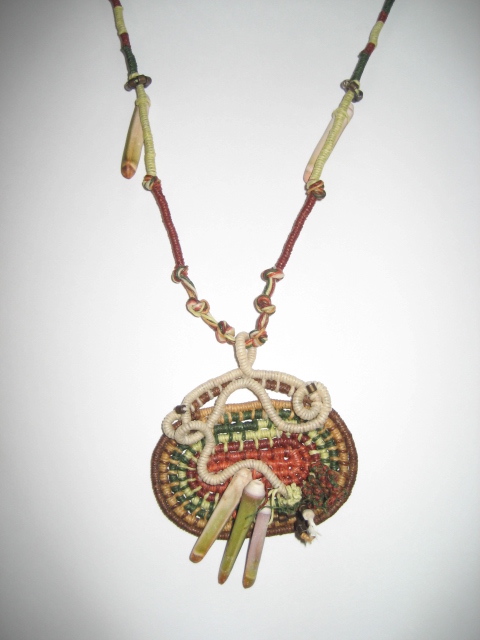
But I eventually decided I didn’t really find jewelry satisfying – too much assembly. And, fibers jewelry making was not really transferable and informative to teaching my students.
Quite by accident I began to make miniature dolls as fetishes and found that quite satisfying for more than ten years. My sister and I attended the American Crafts Council Baltimore Winter Market every year, and I bought one tiny wearable fetish animal doll from An African doll maker each year.
African Animal Fetishes:
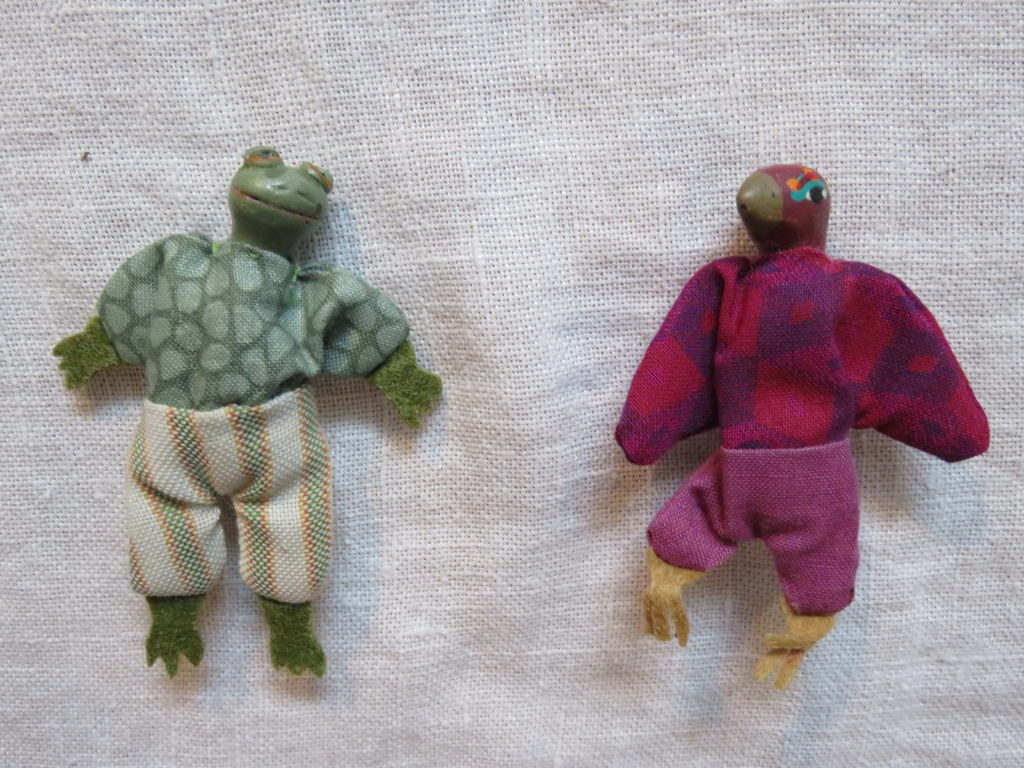
“A fetish is an object of magical powers. It is a guardian chosen by you. Once you have chosen your fetish you must promise to faithfully care for it. You must keep it in a warm, dry place and feed it one grain of corn or rice or bean each year. In return, it will insure you good health, clear sight, protection against injury, success in hunting and trading, and abundant love.”
After the fetish artist moved back to Africa, I went through fetish withdrawal, and I began to design and make my own little fetish dolls. I have worn a fetish every day over the past 40+ years.
I usually worked on a series of fetishes of one color/fabric but each with it’s own look/design (one to keep and the others to share). I tried to complete one step in each sitting (i.e. trace the pattern onto the cloth and cut them out; sew the fetish shape with right sides of the cloth together & leaving an opening along one leg; turn the cloth fetishes right side out, stuff them and stitching them closed; embroider the faces; add hair; clothe one fetish at a time).
Some of my Fetishes:
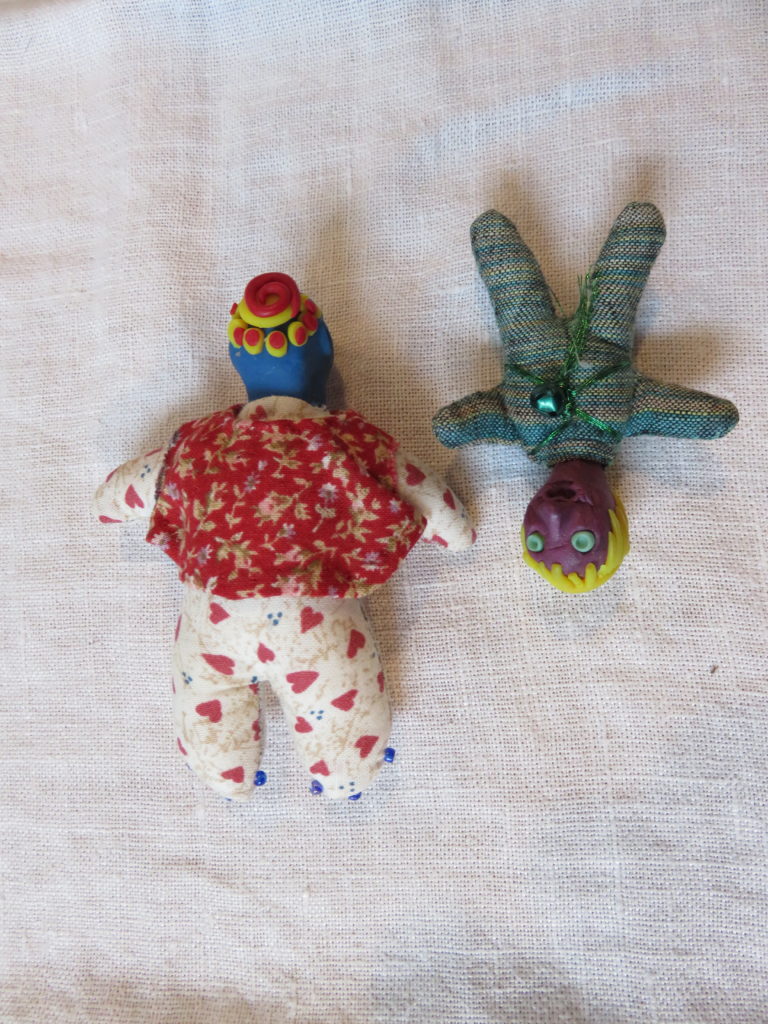
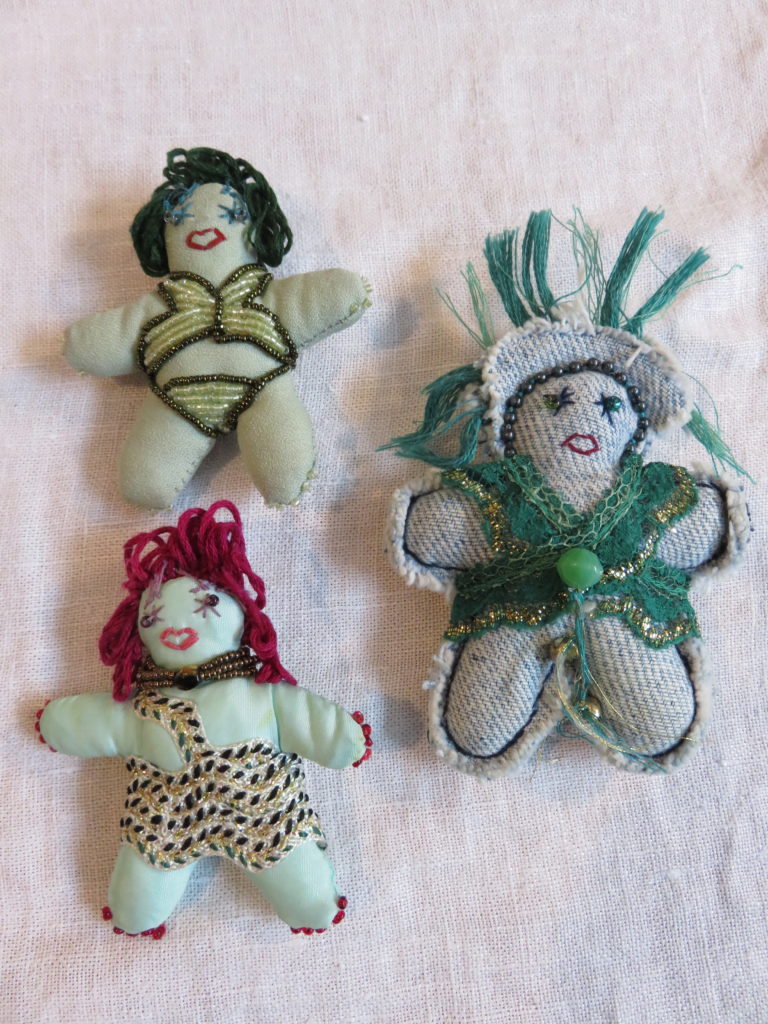
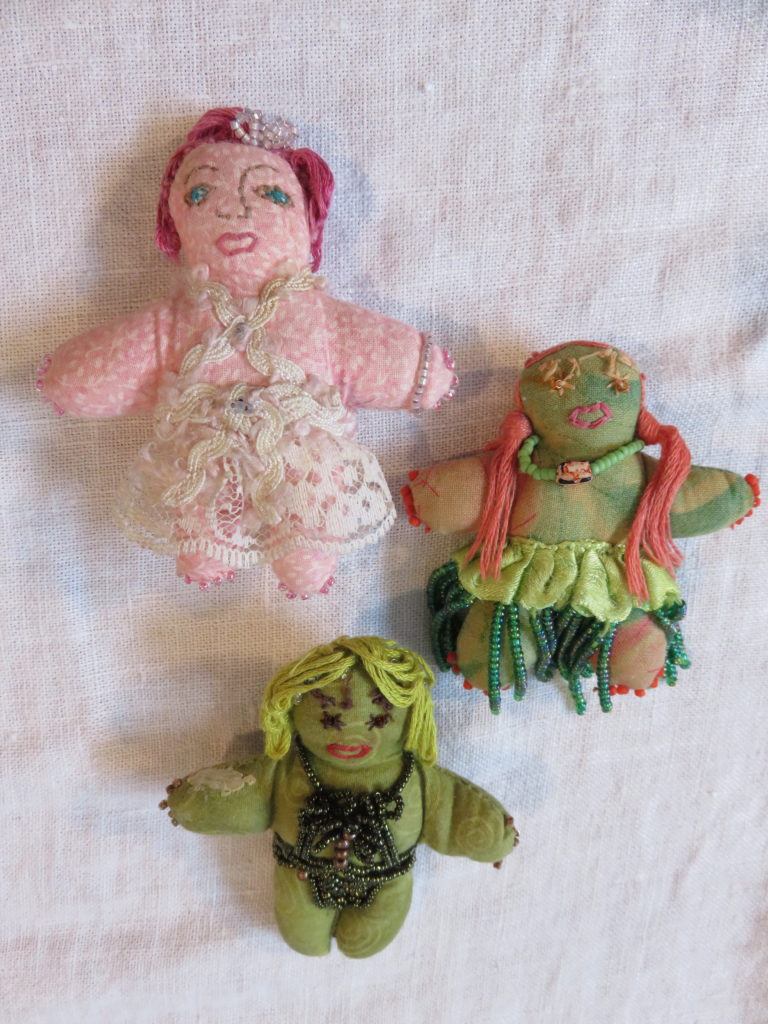
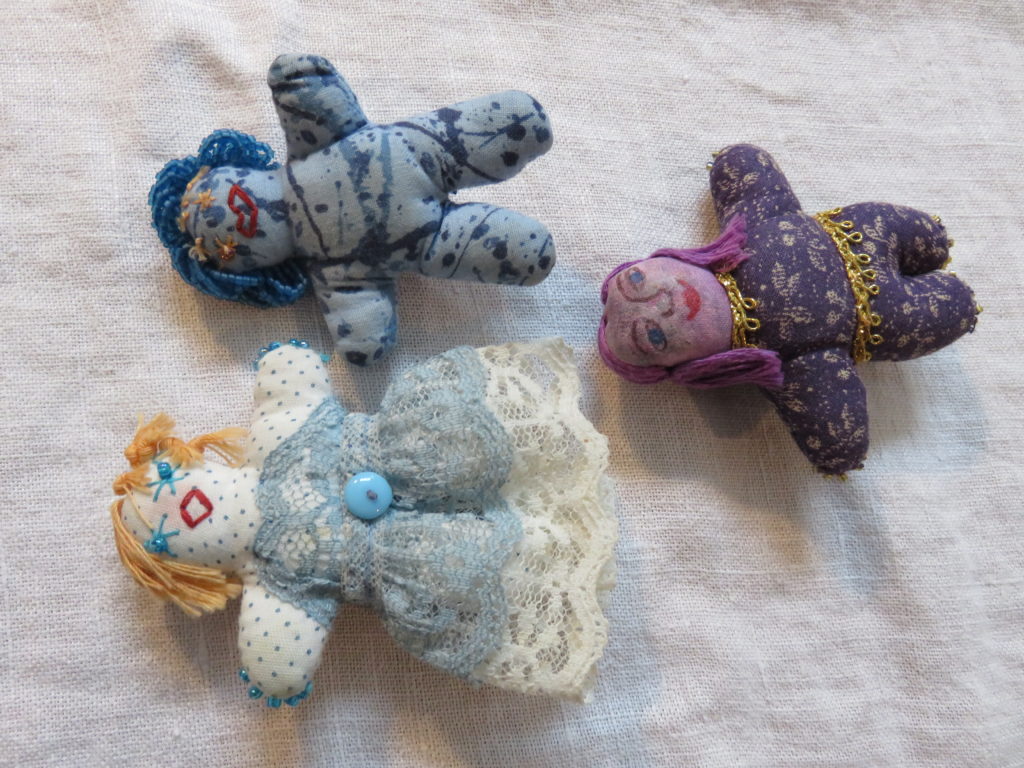
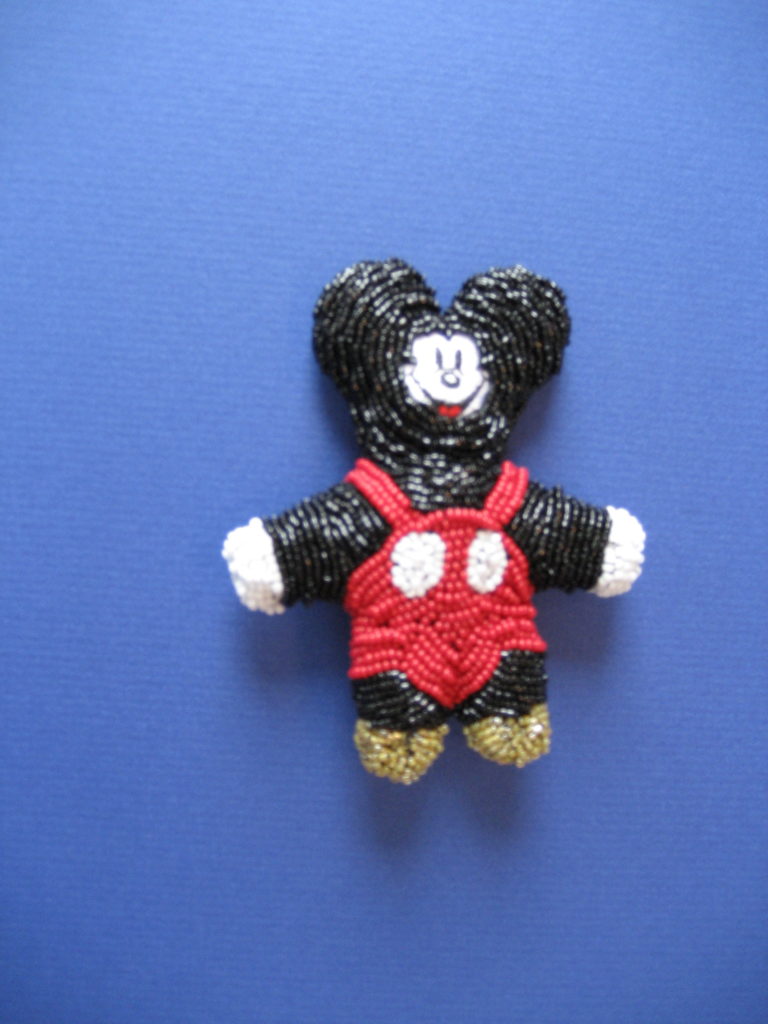
An AHA! Moment occurred when I realized I had boxes and bags of process and project samples for feltmaking (and other fibers processes). They were already of my own hand and design. I pulled them out and began to assemble them into larger sculptures (a technique I then used with students as well). I also challenged myself to create one-a day miniature artifacts to be assembled later into larger pieces.
“Pulls”
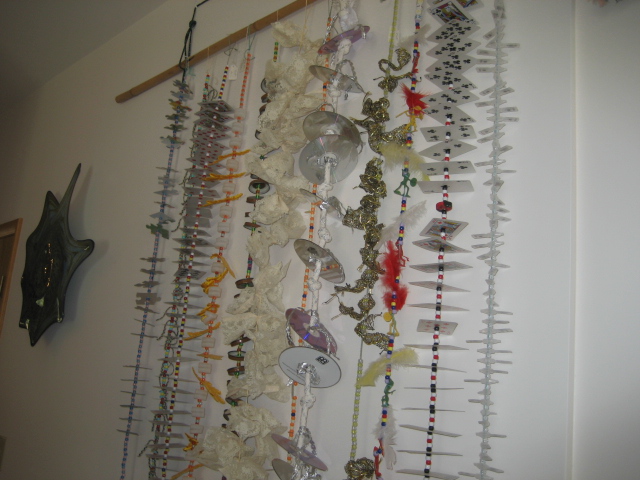
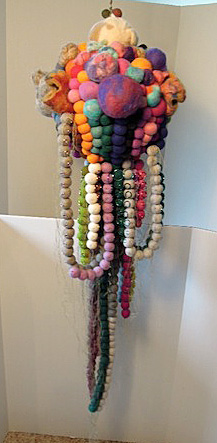
“It’s An Octopus!”
The challenge is the time. I dedicate time (usually weekend or evening) to get a project concept defined in my sketchbook and to organize materials. I look at my schedule to see where I might capture unscheduled time. And I always have a bag or a box loaded and ready when time suddenly and unexpectedly becomes available. I have rules:
- Never let my own art work interfere with planning for my classes and experimenting with materials and techniques before teaching them. Planning is important.
- Never work on my own art during teaching time.
- Request someone else drive whenever possible so I can work on a project during the trip.
- Always have a journal or paper to write down ideas, things to remember, and to record discoveries and things I learned.
- Collect materials and experiences on every walk, vacation, and opportunity.
- Never throw away project failures or demonstration projects. They may serve another purpose later. At the very least, failures help me remember how NOT to do it (because otherwise I will usually do it the unsuccessful way over and over again).
- Teaching others is a prime way to learn and improve my own skills.
- There is always something to be learned, even in the most repetitive experience.
- ALWAYS be ready to work on a project…. i.e. ball gown components created while sitting at Little League games.
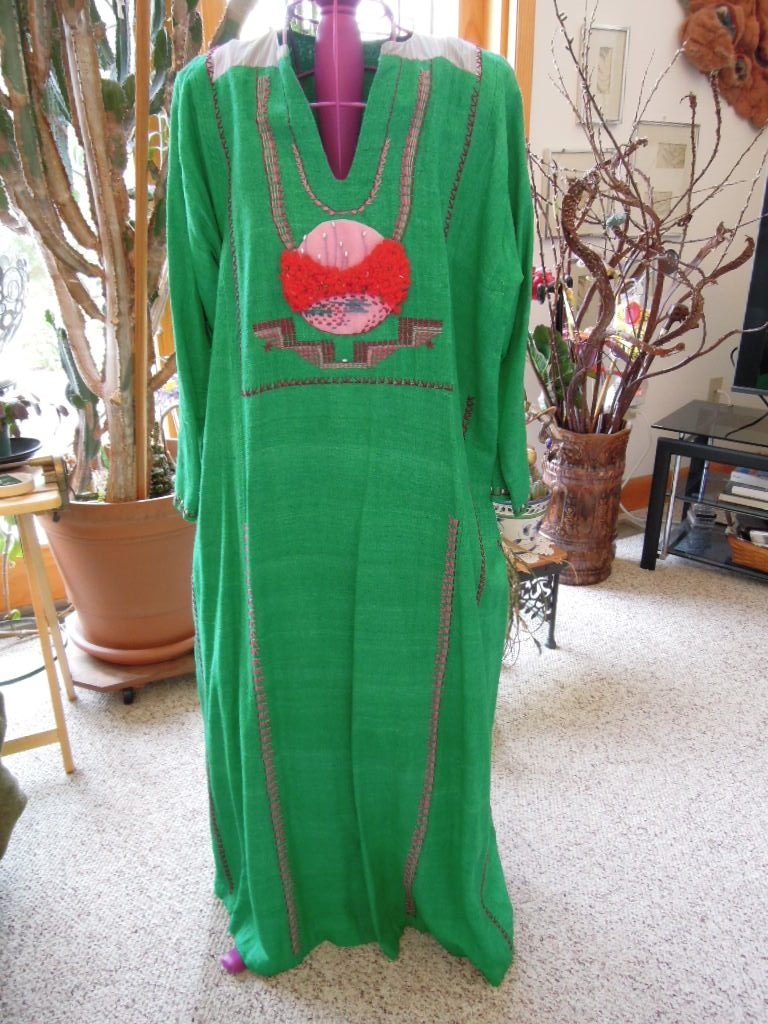
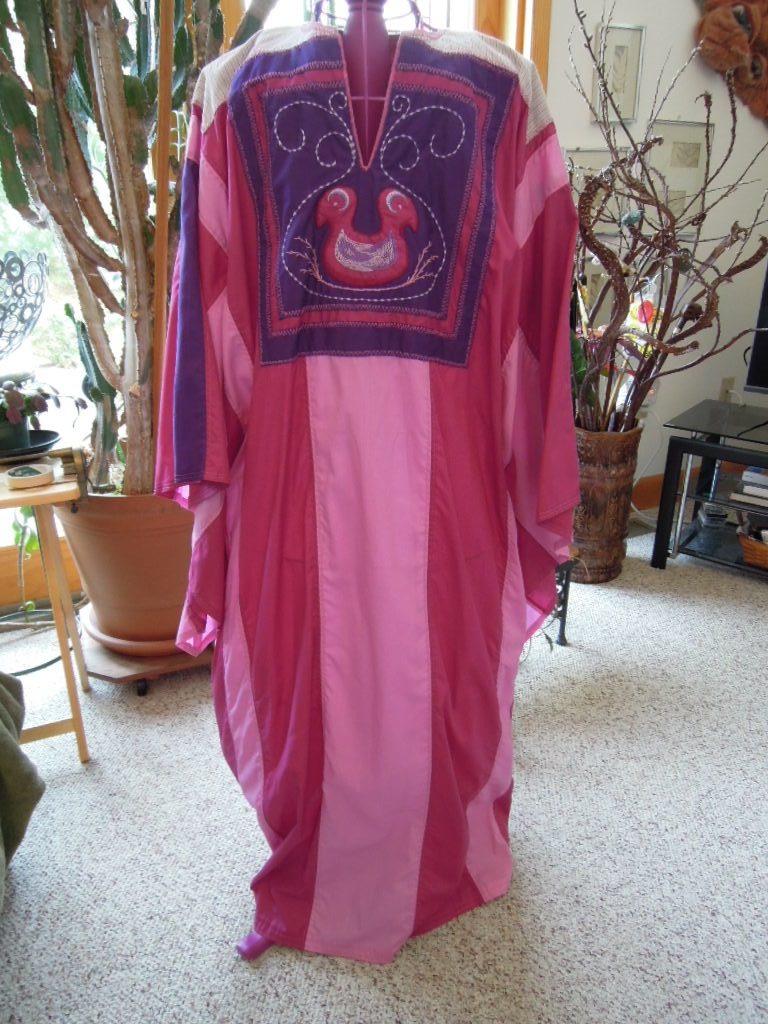
If nothing else inspires, I can always redesign/embellish wearables from my closet.!

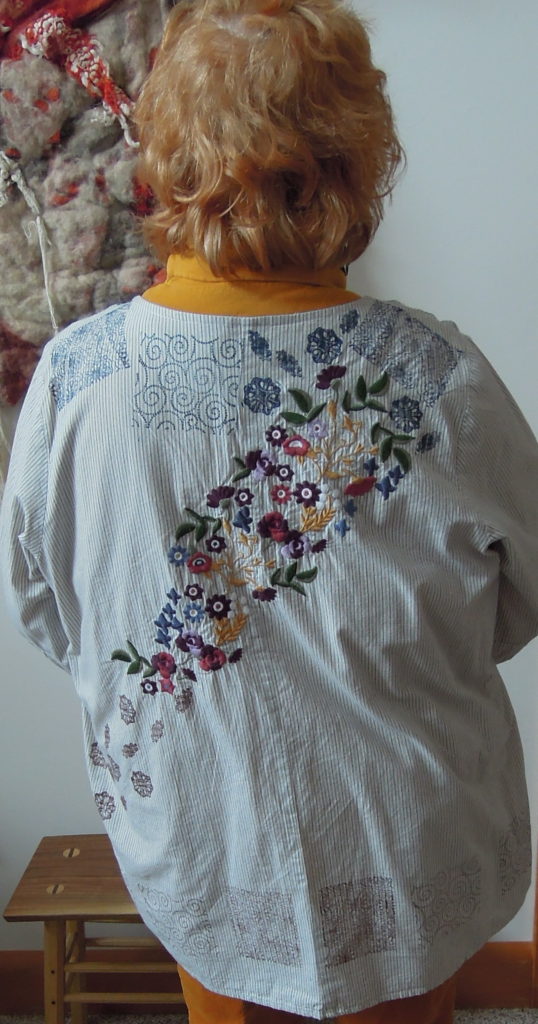
C’est Finis!
PAEA AWARDS – EVERYTHING YOU WANTED TO KNOW BUT WERE TOO AFRAID TO ASK!
Marcy Bogdanich is the PAEA Awards Chair for the Committee, and has loads of helpful information to share about the process.
Awards not only recognize outstanding art educators across our state but act as an advocacy tool for continuing to keep vibrant art programs in Pennsylvania.
THE BASICS!
Send all of the following in ONE folder to paeaawardschair@gmail.com on or before the deadline of Tuesday April 30, 2019. Submissions, complete or incomplete, will not be accepted after the deadline. Missing items will not be considered.
1. 2019 completed NAEA Awards Program Nomination Form and Standardized Vita.
(these can be found at www.arteducators.org/awards)
2. One nomination letter written by the nominator.
(nomination letters MUST be written by a PAEA/NEAE member)
3. Two additional letters of recommendation
(letters supporting the nominee may be written by a PAEA/NAEA member or non-member)
4. A one-paragraph biography of the nominee
5. A high resolution digital photograph
Rubrics will be used for judging all regional and national awards.
Rubrics found on the PAEA web site and at www.arteducators.org/awards will be used for reviewing the nominations submitted for all NAEA awards.For regional and national awards, rubrics have been created to recognize the differentiation in roles among divisions, with separate rubrics for Higher Education, Museum, Supervision/Administration and Preservice and a combined rubric for Elementary, Middle and Secondary.
There is no rubric for New Professional but a very detailed list of criteria is required. All documents need to be submitted together.
ADDITIONAL AWARDS INFORMATION
Eligibility – members who currently serve as voting members (elected or appointed) of a state association board are ineligible to be nominated for NAEA regional, divisional or national awards. Immediate family members may not nominate other family members for awards.
NAEA Awards – NAEA Regional Art Educator of the Year and NAEA Regional Divisions Art Educator of the Year can be submitted from any member and validate member/division status. Any member may also nominate his or her self and send the required information directly to NAEA by-passing the PAEA Awards Program. States/Provinces may identify more than one candidate for these awards. NAEA will forward all nominees to the respective national award committee chairs for committee selection of national award winners.
Nomination Letters – Nominators and nominees should be able to craft support letters so that they can be used for both state and national-level nominations. Simply put, in the award category, list Outstanding Elementary Art Educator without the PAEA/NAEA designation.
AND FINALY – The PAEA Awards Chair will be responsible for submitting PAEA award nominations to www.arteducators.org/awards. If you are nominating outside of PAEA, and know that you may self-nominate for any award, you should submit all information at one time to www.arteducators.org/awards by October 1st.
Please do not submit additional materials that are not requested.
Make sure all pasts to the nominating form and vita are filled in on line.
When filling out the Vita it is best if you choose the most currant and important information related to the award title. Over filling the question boxes on the form does not increase chances for an award. In some cases, when clicked on, some boxes do not expand and the viewer is not able to read everything written. If it takes 20 lines to list your current accomplishments go for it! But stuff from 1999 not so much!
WHEW!!!!! Lots of info. Don’t hesitate to contact Marcy for clarification. paeaawardschair@gmail.com

 D5 Creation
D5 Creation